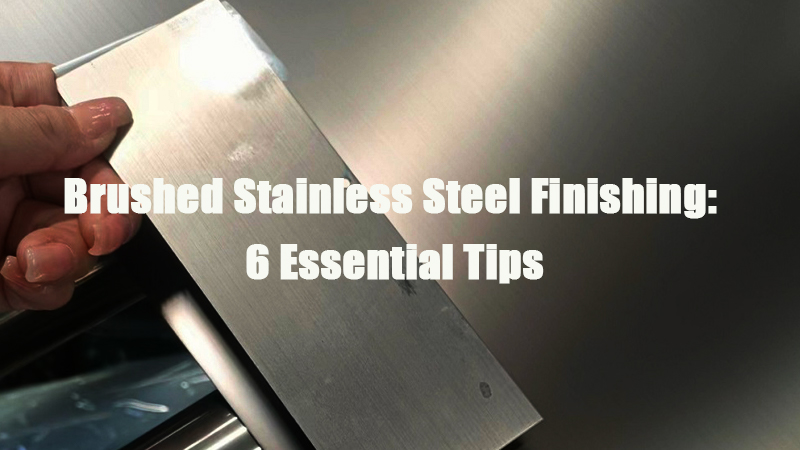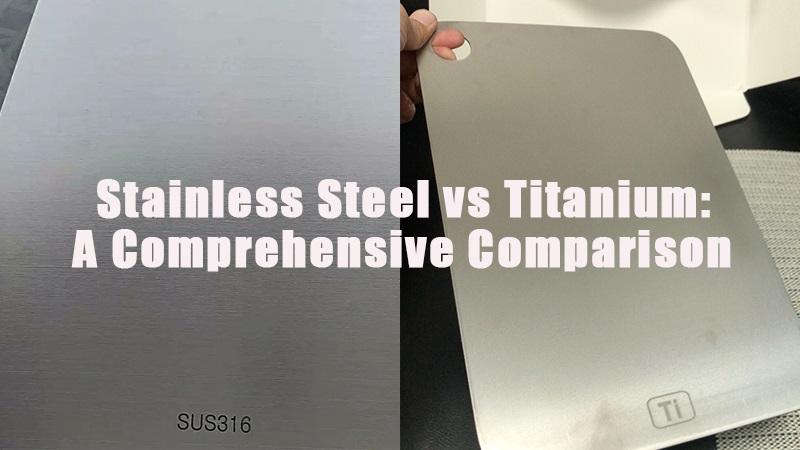
1.0 What is Titanium?
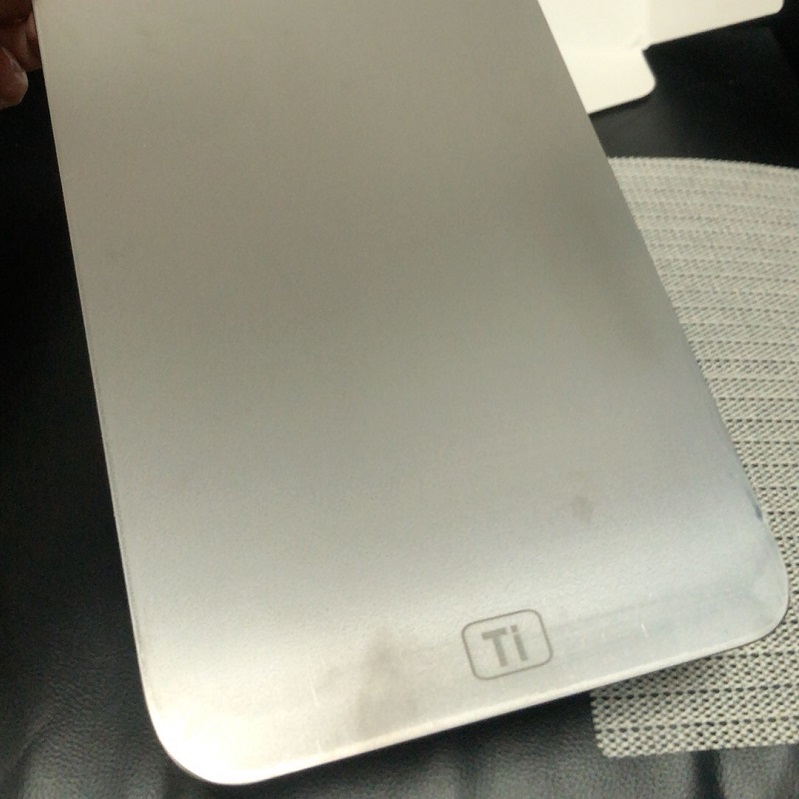
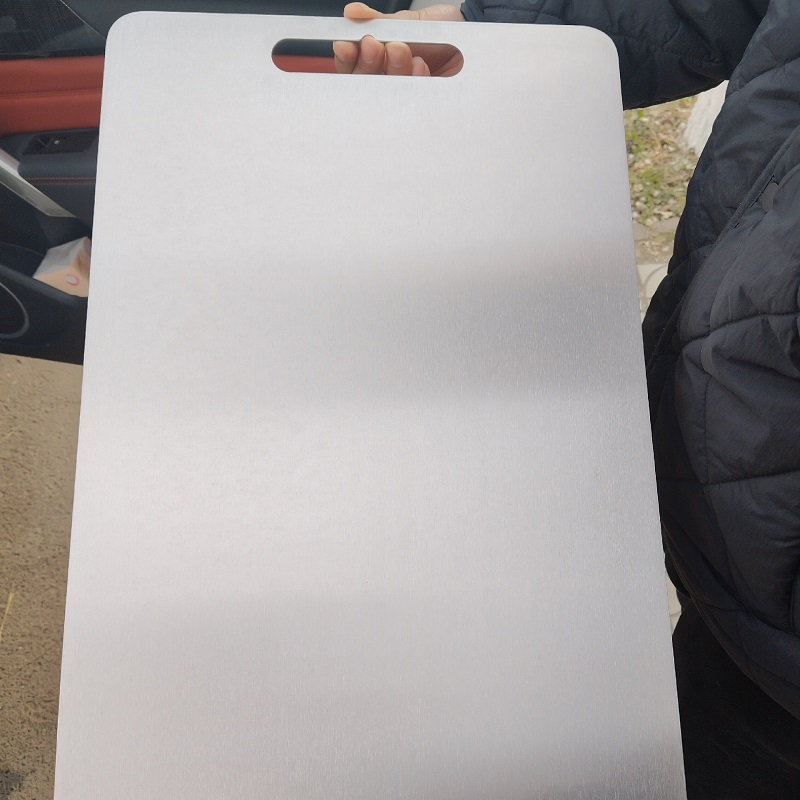
1.1 Overview:
Strong, lightweight, and highly corrosion-resistant.
Durable and suitable for high-temperature applications.
1.2 Pure Titanium:
Contains minimal impurities (less than 0.1%), making it low in strength but highly flexible.
1.3 Titanium Alloys:
Created by adding other metals, it was developed around 60-70 years ago.
2.0 What is Stainless Steel?
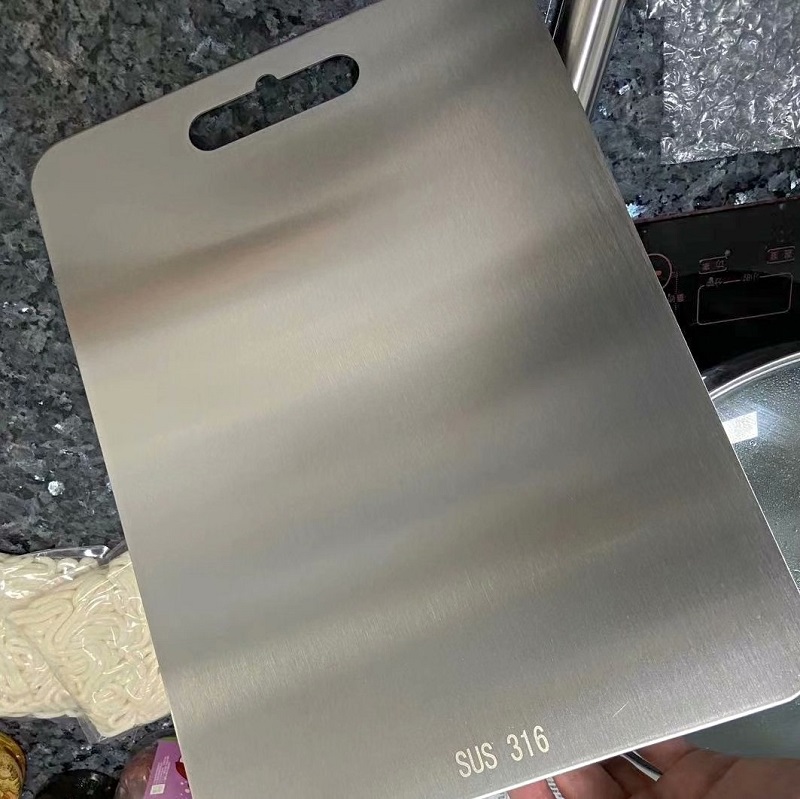

2.1 Overview:
An alloy of iron, chromium, and other metals.
Known for strength, durability, and excellent corrosion resistance.
2.2 Chromium’s Role:
Forms a protective layer that prevents rust.
2.3 Grades and Varieties:
Available in different grades based on structure: austenitic, ferritic, and martensitic.
3.0 Comparative Properties of Stainless Steel and Titanium
| Property | Stainless Steel | Titanium |
| Composition | Iron, Carbon, Chromium, Nickel, Manganese, etc. | Commercially pure or alloyed with aluminum, vanadium, etc. |
| Types | Ferritic, Martensitic, Austenitic, Duplex, Precipitation Hardening | CP Grades 1-2, CP Grades 3-4, Ti 6Al-4V (Grade 5) |
| Corrosion Resistance | Excellent (varies by grade) | Excellent, especially in chloride environments |
| Magnetic Properties | Ferritic grades are magnetic | Non-magnetic |
| Cost | Economical, especially compared to titanium and carbon fiber | High due to production complexity |
| Machinability | Good (e.g., Type 303 is free-machining) | Generally good, but harder to machine than stainless steel |
| Weldability | Excellent for arc welding (TIG, MIG, MMA, SA) | Good, but it may require specialized techniques |
| Heat Resistance | High (e.g., 304 up to 1600°F, 310 up to 1895°F) | High (Ti 6Al-4V performs well at elevated temperatures) |
| Weight | Heavy (approx. 8 g/cm³) | Lighter (approx. 4.5 g/cm³) |
| Strength | Varies by grade, generally strong | Very strong, especially in alloys like Ti 6Al-4V |
| Density | High density (3x more than aluminum) | Lower density than stainless steel |
| Cost-Effectiveness | Generally cost-effective for corrosion resistance | More expensive than stainless steel |
| Chloride Resistance | Susceptible to pitting in chloride environments | Excellent resistance, especially in seawater |
| Applications | Foodservice, medical tools, aerospace, automotive | Aerospace, marine, high-performance applications |
4.0 How to Use Stainless Steel and Titanium in Machining?
When machining stainless steel and titanium, specific considerations need to be taken into account due to their unique properties. Below is a comparison of key factors for machining each material:
| Characteristic | Titanium | Stainless Steel | Comment |
| Price | ❌ | ✔️ | SS is several times less costly |
| Weight | ✔️ | ❌ | Ti is 40% the weight for equal strength |
| Tensile/Yield Strength | ✔️ | ✔️ | Nearly equivalent, grade-dependent |
| Durability | ❌ | ✔️ | SS has better impact & scratch resistance |
| Composition | ✔️ | ✔️ | Wide range of available grades |
| Corrosion Resistance | ✔️ | ❌ | Clear winner, titanium has superior corrosion resistance |
| Hardness | ❌ | ✔️ | In general SS, but it’s grade-dependent |
| Chemical Resistance | ✔️ | ❌ | At normal temps, Ti has the edge |
| Temperature Resistance | ❌ | ✔️ | SS up to 2000°F, Ti up to 1500°F |
Here is a detailed comparison between Stainless Steel Plate and Titanium, highlighting key aspects such as composition, mechanical properties, cost, and applications.
| Material | Stainless Steel Plate | Titanium |
| Composition | Primarily iron, chromium (10.5%+), nickel, molybdenum, and carbon depending on grade (e.g., 304, 316) | Metallic element alloyed with aluminum, vanadium, etc. (e.g., Ti-6Al-4V, Grade 2) |
| Corrosion Resistance | Good resistance, enhanced by grades like 316 for severe environments | Excellent resistance, especially in harsh environments like seawater and acidic solutions |
| Strength & Durability | High tensile strength, durable in structural applications, but varies by grade | Exceptional strength-to-weight ratio, more strength relative to weight, suited for high-performance applications |
| Weight | Relatively heavy compared to titanium | Much lighter, ideal for weight-sensitive applications like aerospace |
| Cost | ₹250-₹500 per kg depending on grade | ₹3,000-₹6,000 per kg, reflecting high extraction and processing costs |
| Tensile Strength | 520 MPa (304) to 1300 MPa (316) | 880 MPa to 1200 MPa (e.g., Ti-6Al-4V) |
| Hardness | Moderate, varies by alloy and heat treatment | Higher hardness than stainless steel, better wear resistance |
| Ductility | Good, suitable for forming and welding | Less ductile but retains good malleability, some alloys may be brittle |
| Applications | Construction, industrial equipment, consumer goods, food and beverage industry | Aerospace, marine, medical implants, high-performance automotive |
| Advantages | Cost-effective, versatile, good corrosion resistance for most uses, easy to weld | Lightweight, high strength-to-weight ratio, excellent corrosion resistance, suitable for harsh environments |
| Disadvantages | Heavier than titanium, it may not perform well in extreme corrosion or conditions | Expensive, more difficult to machine and weld, can be brittle in some forms and conditions |
5.0 Comparing Strength: Titanium vs. Stainless Steel
5.1 Tensile Strength
- Titanium alloys: 345–1380 MPa (50,000–200,000 psi), depending on alloy and treatment.
- Stainless steels: Vary by crystalline structure and processing, with a wide strength range.
5.2 Material Properties
- Crystal Structure: Titanium has a hexagonal close-packed (HCP) structure, limiting slip planes and increasing strength while reducing ductility. Stainless steel exhibits diverse structures (FCC, BCC, BCT) affecting strength and malleability.
- Grain Size Control: Both materials benefit from heat treatment and controlled cooling to enhance properties.
- Alloying: Titanium can be used in native or alloyed form, while stainless steel is intrinsically alloyed with elements like chromium, nickel, and molybdenum.
5.3 Thermal Performance
- Titanium retains strength at high temperatures (up to 550°C), enhanced further with aluminum alloying.
- Stainless steel and titanium alloys can be heat-treated for improved properties.
5.4 High-Temperature Superalloys
Monocrystalline structures in specialized alloys provide exceptional heat tolerance, often used in extreme environments.
The following table compares the strength properties of steel and titanium, focusing on key characteristics such as density, tensile yield strength, stiffness, fracture strain, and hardness.
| Property | Steel | Titanium |
| Density | 7.8–8 g/cm³ | 4.51 g/cm³ |
| Tensile Yield Strength | 350 megapascals | 140 megapascals |
| Stiffness | 200 gigapascals | 116 gigapascals |
| Fracture Strain | 15% | 54% |
| Hardness (Brinell scale) | 121 | 70 |
6.0 Alloy elements and their influence on weight
- Titanium alloys include a range of alloying agents:
- Aluminum in Titanium alloys contributes to reduced weight without excessive loss of strength.
- Vanadium enhances the alloy’s mechanical properties.
- Iron is often added to improve weldability.
- Titanium is included in some stainless steel alloys, to improve corrosion resistance.

6.1 Thermal Conductivity and Corrosion Resistance
Both stainless steel and titanium have poor thermal conductivity. Titanium’s conductivity decreases as temperature rises, while stainless steel exhibits low conductivity with a slight increase at higher temperatures.

6.2 Titanium vs. Stainless Steel: Oxide Layers and Their Effects
- Titanium: Forms a self-healing titanium dioxide (TiO₂) layer, providing excellent chemical resistance and biocompatibility.
- Stainless Steel: Develops a chromium oxide (Cr₂O₃) film, offering corrosion resistance and self-repairing properties in oxygen-rich environments.
6.3 Usage and Applications of Titanium
Titanium and its alloy family are widely used in high-value industries and specialized consumer products where cost is secondary to performance. Titanium’s non-toxic, lightweight, and biocompatible nature extends its versatility to applications where durability and reliability are paramount.
- Aerospace: High strength, low weight, and resistance to corrosion and high temperatures make titanium ideal for jet engines, airframes, spacecraft, and satellites.
- Medical: Its biocompatibility supports use in implants (joints, dental), prosthetics, and surgical tools, offering durability and safety for long-term tissue contact.
- Chemical Processing: Exceptional corrosion resistance in harsh chemical environments makes it suitable for heat exchangers, valves, and reactors.
- Military: Strength, durability, and corrosion resistance ensure its use in armored vehicles, naval equipment, and aircraft.
- Sports Equipment: A high strength-to-weight ratio benefits bicycles, golf clubs, and racquets, offering both performance and luxury appeal.
- Automotive: Lightweight and corrosion-resistant components like exhaust systems and suspension parts enhance high-performance vehicles.
- Oil and Gas: Resilience in marine environments and corrosive fluids suits it for offshore platforms and equipment.
- Desalination: Chloride resistance makes titanium essential in saltwater handling applications.
- Food Processing: Non-toxicity ensures safe use in contamination-sensitive equipment.
References:https://jiga.io/articles/titanium-vs-stainless-steel/





